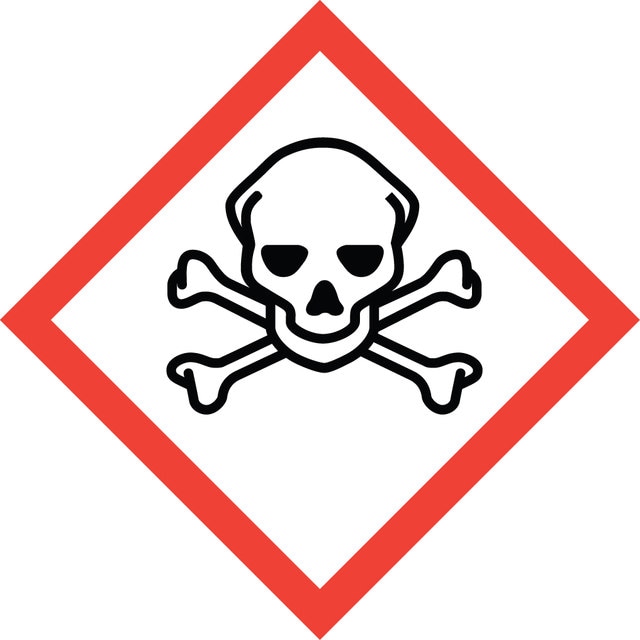Sign In to View Organizational & Contract Pricing
Select a Size
About This Item
Linear Formula:
(CH3)2SiCl2
CAS Number:
Molecular Weight:
129.06
Beilstein:
605287
EC Number:
MDL number:
UNSPSC Code:
12352101
PubChem Substance ID:
NACRES:
NA.22
Quality Level
Assay
≥99.0% (GC)
form
liquid
manufacturer/tradename
Wacker Chemie AG
refractive index
n20/D 1.404 (lit.)
bp
70 °C (lit.)
mp
−76 °C (lit.)
density
1.07 g/mL at 25 °C (lit.)
SMILES string
C[Si](C)(Cl)Cl
InChI
1S/C2H6Cl2Si/c1-5(2,3)4/h1-2H3
InChI key
LIKFHECYJZWXFJ-UHFFFAOYSA-N
Looking for similar products? Visit Product Comparison Guide
Related Categories
General description
Dichlorodimethylsilane is an organosilicon compound generally used as a protecting group for diols and carbonyl compounds. It is also used as a starting material for the preparation of silicon-based reagents.
Application
Dichlorodimethylsilane can be used:
- As a silane coupling agent in the synthesis of silica nanoparticles and in their surface modification studies.
- To prepare polydimethylsiloxane microemulsions by reacting with sodium dodecylpolyoxyethylene sulfate.
- To prepare a novel heterasumanene where the benzylic carbon atoms of the sumanene are replaced by heteroatom (S, Si) functionalities
Other Notes
prices for bulk quantities on request
Signal Word
Danger
Hazard Statements
Precautionary Statements
Hazard Classifications
Acute Tox. 3 Inhalation - Acute Tox. 4 Oral - Eye Dam. 1 - Flam. Liq. 2 - Skin Corr. 1A - STOT SE 3
Target Organs
Respiratory system
Storage Class Code
3 - Flammable liquids
WGK
WGK 1
Flash Point(F)
33.8 °F - closed cup
Flash Point(C)
1 °C - closed cup
Personal Protective Equipment
dust mask type N95 (US), Eyeshields, Gloves
Regulatory Information
危险化学品
This item has
Choose from one of the most recent versions:
Already Own This Product?
Find documentation for the products that you have recently purchased in the Document Library.
Zhongyan Lu et al.
American journal of physiology. Regulatory, integrative and comparative physiology, 307(5), R558-R570 (2014-06-13)
Ruminal fermentation products such as short-chain fatty acids (SCFA) and CO2 acutely stimulate urea transport across the ruminal epithelium in vivo, whereas ammonia has inhibitory effects. Uptake and signaling pathways remain obscure. The ruminal expression of SLC14a1 (UT-B) was studied
J M Curran et al.
Biomaterials, 32(21), 4753-4760 (2011-04-15)
Material modifications can be used to induce cell responses, in particular-CH(3) and -NH(2) have shown potential in enhancing the ability of a material to support mesenchymal stem cell (MSC) adhesion and differentiation. Currently this process is variable, due to the
S C Lung et al.
Chemosphere, 41(12), 1865-1871 (2000-11-04)
The effects of coating materials on polychlorinated biphenyl (PCB) adsorption in aqueous solution were assessed in an attempt to minimize PCB sorption loss during sampling processes. A coating material, which enhances PCB adsorption and allows adsorbed PCBs to be readily
J Sotres et al.
Journal of dental research, 91(10), 973-978 (2012-08-10)
The pellicle serves as a multifunctional protective layer, providing, e.g., lubrication and remineralization and also acting as a diffusion barrier. In addition, since the formation of the pellicle precedes the adhesion of micro-organisms, it is also important as a conditioning
Bernard P Binks et al.
Physical chemistry chemical physics : PCCP, 9(48), 6391-6397 (2007-12-07)
We report measured and calculated oil-ionic liquid, water-ionic liquid and oil-water contact angles on silica surfaces which have been hydrophobised to different extents by silanisation. Based on the idea that the contact angle formed by a liquid-liquid interface with a
Our team of scientists has experience in all areas of research including Life Science, Material Science, Chemical Synthesis, Chromatography, Analytical and many others.
Contact Technical Service

